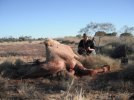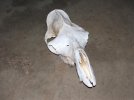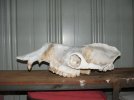Code4
AH fanatic
- Joined
- Feb 2, 2009
- Messages
- 763
- Reaction score
- 569
- Media
- 44
- Member of
- SSAA
- Hunted
- Australia, Zimbabwe, RSA (2), NZ (2), UK.
Camels are not hard to kill but they take a long time to realise they are dead. I hope this statement makes more sense as the report unfolds.

We received an invitation from one of the local lads working as a jackaroo in far west Qld who was happy for any Warialda shooters to come up and shoot camels. Accessing camels is not all that easy with considerable planning, distances and outlay required. It was too good an opportunity to miss so a few baits were sent out. With mates overseas, with crook backs and short notice, no takers came forward.
Cameron my son is in his last year of school, school captain etc but his marks aren't too good and aren't likely to improve as he mentally left home a long time ago. The cook gave permission to take him so he came along. I won't have him much longer and it was a trip to do together.
We realised that we would have to be totally self sufficient out of the back of the twin cab rodeo so we packed our gear, food, 120 litres of spare fuel and 60 litres of water into the back and set off.

It is approx 1,500km to the last town (Boulia) which we reached in a day and a half to refuel for the last time.
Day One: We met up with the owner at 06:00 who gave us directions and added the newer graded tracks to our 1:100,000 maps. Our instructions were to 'drill everything'. The workers were all still away on the grog at a birthday party two hours up the road so we headed off with GPS, map and rifles at the ready. Cameron had his Tony Small built Parker Hale .243 Mauser '98 which he had taken to Africa three years earlier and his 8x57 ex-mil VZ-24 Mauser '98 with open sights. I had my Tony Small custom 7x57 FN Mauser '98 loaded with 175 Woodleigh PPSN's and my Remington 700 ADL .264WM with Woodleigh 140 PPSN's.
Method:
The locals tear around the property at high speed in Landcruisers and Highlux's shooting from the trucks so we decided to keep our speed down to 30kph and if we sighted any animals to quietly come to a halt and hunt on foot. This turned out to be the correct strategy as the camels had never been hunted on foot. We had 'bug out' backpacks ready to take with us containing water, spare ammo, torch, camera, dried food, John Foxwell knives, fire lighting equipment, thermal blanket and emergency flare in case we got disorientated and lost. This all proved unnecessary except for the camera and water. We visited a number of waterholes and water points without result and were just starting to look for a camp sight when Cameron looked behind us to see six camels watching us drive past.
I had first dibs so it was out with the 7x57 which I laid across the swags on the back of the truck. They lasered at just over 250 yards, a common range we were to discover. The lead Camel was facing me slightly quatering to my right and I hit a Woodleigh just to the right of the right shoulder angling towards the rear left leg.
How Camels reacted when we shot them:
This one gave a slight jump, arching its back and lifting its front legs off the ground. A noticeable ripple effect spread across its body like a droplet falling into a still pool of water. This was common on all the camels we hit hard with the first shot. It then stood still and started to slowly walk off to the right. I gave it a second into the right shoulder with nothing more than another ripple and it eventually lay down about 30 metres away, curled its neck down its side and expired. We saw this reaction constantly over the next few days except for the few Cameron head and neck shot with his .243W.

I shot two more camels from that position and all required multiple shots. If you get the lead animal, the rest will mill around (like goats) not knowing what to do.
Camp One was not too far down the road. Gidgey wood makes a great camp fire and we have a boom off the back of the truck for a shower bucket so we don't do it too rough. We spread our swags on camp stretchers and had thermal underwear and thick wool socks to keep us warm.


Day Two: Up, packed and on the road north to meet up with the station staff and owner who were mustering cattle far, far away. We decided to take the longer, lesser used tracks to keep the opportunitys to see more camels higher. This also paid off. Upon ariiving at a central cattle watering point we bumped a large mob of camels who quickly moved off except for the large male at the rear. It was Camerons turn so out he got, stalked to within 75 yards and gave him two in the right shoulder. It walked 30 metres (that distance again) and lay down. It needed an ex-mil FMJ coup de grace in the head and it was over.

We dragged it clear of the water point about 50 metres away close to the main track as pig bait for the locals later.
Not far from there we bumped two males on the track and Cam took them both quickly with head shots from the truck with the .243 without dramas. Now with head shots they Bang Flop and being huge animals it really is a spectacular show.

A few more Km's and I bumped my 'big boy'. An old male with worn off top front teeth, huge in body and dirty with dust and piss stained all down his rear legs. I stalked to within 150 yards and went prone unsupported on the gravel. The .264WM put a 140 PPSN Woodleigh behind his right shoulder. The entry hole is in the photo. A huge cloud of dust blew off him on the far side as the ripple effect went through. He calmly walked off with a hosepipe of dark red blood spurting out 30cm from his side. I gave him a second round in the same location angling forward to the front left of his chest. Neither projectile exited and after about 30 metres he realised he was in trouble and gave up the ghost.

I took off his head and brought the top of the skull home, roped under the trucks tray. It boils away sticking out of a 20 litre drum on my BBQ as I type this. I had two knives and Cameron had to keep sharpening them in rotation as the dust imprenated hair kept blunted their edges.
Cam doing the navigation with the GPS and useing an 8x57 stripper clip to measure distances on the map.

We caught up with the musterers. There were seven camels in the thick bush of the 10 squ km holding yards and the owner wanted them gone. We had it all done in 40 minutes with 7x57 and .243.
We drove on passing over a river bed of slate which contained numerous fossils.

That night we made a similar camp to before.
Day Three:
We were keen to get north into the hill country and the true Simpson Desert so we pressed on. Another camel appeared off in the grass country and a 450 metre stalk saw Cameron within 100 metres and the 8x57 spoke again.

We planned to have morning tea on top of a hill.
A mob of 40-50 camels changed those planes. We 'bombed up' the mob in true unethical style and found ourselves out of handloads. Only 8x57 ex-mil FMJ's remained. Sadly we headed south, meeting up with the musterers and helping them for the last couple of hours.

We were invited to join them for a feed and to share their fire before sleeping in the 'dongas' they use for accomodation.
A quick hour of work the next morning saw Cameron on the crush before we headed off for home.

One more camel wandered into our path and again Cameron did the honours.

On the way home we stopped for the night at Barcaldine where I was able to visit 'The Tree of Knowledge'. This is where the beginning of unionised labour in Australia began and as a bit of a lefty, I was glad to have my photo taken next to this memorial.

We got home one and half days early, out of money and ammo. We plan to return depite fuel costs running to A$1,050. Next time we will carry fuel, water and camping gear in a trailer and use it as a base camp for 2-3 days before moving on. This will leave the truck free to be used as a hunting vehicle with its high shooting rack from which much more could be seen.
Ballistic Analysis:
No rounds were recovered. I would need a small chain saw, a hack saw and a few hours to recover any. The 7x57 hit above its weight and only the very first 'front on' shot was not a pass through. The musterers could hear the 'Thwock' of it impacting from over 1km away. The .264WM was the most useful due to its flat trajectory. Cameron made sure he was close enough to use the 8x57 and it had no problems with the larger bulls.
To get DRT results with body shots, IMHO the recommendation to use a minimum of a .338WM as a minimum is the correct one or otherwise spinal shots are needed. I'll take the 9.3x62 next time and the .264WM.
The .243 was the 'go to rifle' for most shooting and really is versatile out there with 100 grainers.
We received an invitation from one of the local lads working as a jackaroo in far west Qld who was happy for any Warialda shooters to come up and shoot camels. Accessing camels is not all that easy with considerable planning, distances and outlay required. It was too good an opportunity to miss so a few baits were sent out. With mates overseas, with crook backs and short notice, no takers came forward.
Cameron my son is in his last year of school, school captain etc but his marks aren't too good and aren't likely to improve as he mentally left home a long time ago. The cook gave permission to take him so he came along. I won't have him much longer and it was a trip to do together.
We realised that we would have to be totally self sufficient out of the back of the twin cab rodeo so we packed our gear, food, 120 litres of spare fuel and 60 litres of water into the back and set off.

It is approx 1,500km to the last town (Boulia) which we reached in a day and a half to refuel for the last time.
Day One: We met up with the owner at 06:00 who gave us directions and added the newer graded tracks to our 1:100,000 maps. Our instructions were to 'drill everything'. The workers were all still away on the grog at a birthday party two hours up the road so we headed off with GPS, map and rifles at the ready. Cameron had his Tony Small built Parker Hale .243 Mauser '98 which he had taken to Africa three years earlier and his 8x57 ex-mil VZ-24 Mauser '98 with open sights. I had my Tony Small custom 7x57 FN Mauser '98 loaded with 175 Woodleigh PPSN's and my Remington 700 ADL .264WM with Woodleigh 140 PPSN's.
Method:
The locals tear around the property at high speed in Landcruisers and Highlux's shooting from the trucks so we decided to keep our speed down to 30kph and if we sighted any animals to quietly come to a halt and hunt on foot. This turned out to be the correct strategy as the camels had never been hunted on foot. We had 'bug out' backpacks ready to take with us containing water, spare ammo, torch, camera, dried food, John Foxwell knives, fire lighting equipment, thermal blanket and emergency flare in case we got disorientated and lost. This all proved unnecessary except for the camera and water. We visited a number of waterholes and water points without result and were just starting to look for a camp sight when Cameron looked behind us to see six camels watching us drive past.
I had first dibs so it was out with the 7x57 which I laid across the swags on the back of the truck. They lasered at just over 250 yards, a common range we were to discover. The lead Camel was facing me slightly quatering to my right and I hit a Woodleigh just to the right of the right shoulder angling towards the rear left leg.
How Camels reacted when we shot them:
This one gave a slight jump, arching its back and lifting its front legs off the ground. A noticeable ripple effect spread across its body like a droplet falling into a still pool of water. This was common on all the camels we hit hard with the first shot. It then stood still and started to slowly walk off to the right. I gave it a second into the right shoulder with nothing more than another ripple and it eventually lay down about 30 metres away, curled its neck down its side and expired. We saw this reaction constantly over the next few days except for the few Cameron head and neck shot with his .243W.

I shot two more camels from that position and all required multiple shots. If you get the lead animal, the rest will mill around (like goats) not knowing what to do.
Camp One was not too far down the road. Gidgey wood makes a great camp fire and we have a boom off the back of the truck for a shower bucket so we don't do it too rough. We spread our swags on camp stretchers and had thermal underwear and thick wool socks to keep us warm.


Day Two: Up, packed and on the road north to meet up with the station staff and owner who were mustering cattle far, far away. We decided to take the longer, lesser used tracks to keep the opportunitys to see more camels higher. This also paid off. Upon ariiving at a central cattle watering point we bumped a large mob of camels who quickly moved off except for the large male at the rear. It was Camerons turn so out he got, stalked to within 75 yards and gave him two in the right shoulder. It walked 30 metres (that distance again) and lay down. It needed an ex-mil FMJ coup de grace in the head and it was over.

We dragged it clear of the water point about 50 metres away close to the main track as pig bait for the locals later.
Not far from there we bumped two males on the track and Cam took them both quickly with head shots from the truck with the .243 without dramas. Now with head shots they Bang Flop and being huge animals it really is a spectacular show.

A few more Km's and I bumped my 'big boy'. An old male with worn off top front teeth, huge in body and dirty with dust and piss stained all down his rear legs. I stalked to within 150 yards and went prone unsupported on the gravel. The .264WM put a 140 PPSN Woodleigh behind his right shoulder. The entry hole is in the photo. A huge cloud of dust blew off him on the far side as the ripple effect went through. He calmly walked off with a hosepipe of dark red blood spurting out 30cm from his side. I gave him a second round in the same location angling forward to the front left of his chest. Neither projectile exited and after about 30 metres he realised he was in trouble and gave up the ghost.

I took off his head and brought the top of the skull home, roped under the trucks tray. It boils away sticking out of a 20 litre drum on my BBQ as I type this. I had two knives and Cameron had to keep sharpening them in rotation as the dust imprenated hair kept blunted their edges.
Cam doing the navigation with the GPS and useing an 8x57 stripper clip to measure distances on the map.

We caught up with the musterers. There were seven camels in the thick bush of the 10 squ km holding yards and the owner wanted them gone. We had it all done in 40 minutes with 7x57 and .243.
We drove on passing over a river bed of slate which contained numerous fossils.

That night we made a similar camp to before.
Day Three:
We were keen to get north into the hill country and the true Simpson Desert so we pressed on. Another camel appeared off in the grass country and a 450 metre stalk saw Cameron within 100 metres and the 8x57 spoke again.

We planned to have morning tea on top of a hill.
A mob of 40-50 camels changed those planes. We 'bombed up' the mob in true unethical style and found ourselves out of handloads. Only 8x57 ex-mil FMJ's remained. Sadly we headed south, meeting up with the musterers and helping them for the last couple of hours.

We were invited to join them for a feed and to share their fire before sleeping in the 'dongas' they use for accomodation.
A quick hour of work the next morning saw Cameron on the crush before we headed off for home.

One more camel wandered into our path and again Cameron did the honours.

On the way home we stopped for the night at Barcaldine where I was able to visit 'The Tree of Knowledge'. This is where the beginning of unionised labour in Australia began and as a bit of a lefty, I was glad to have my photo taken next to this memorial.

We got home one and half days early, out of money and ammo. We plan to return depite fuel costs running to A$1,050. Next time we will carry fuel, water and camping gear in a trailer and use it as a base camp for 2-3 days before moving on. This will leave the truck free to be used as a hunting vehicle with its high shooting rack from which much more could be seen.
Ballistic Analysis:
No rounds were recovered. I would need a small chain saw, a hack saw and a few hours to recover any. The 7x57 hit above its weight and only the very first 'front on' shot was not a pass through. The musterers could hear the 'Thwock' of it impacting from over 1km away. The .264WM was the most useful due to its flat trajectory. Cameron made sure he was close enough to use the 8x57 and it had no problems with the larger bulls.
To get DRT results with body shots, IMHO the recommendation to use a minimum of a .338WM as a minimum is the correct one or otherwise spinal shots are needed. I'll take the 9.3x62 next time and the .264WM.
The .243 was the 'go to rifle' for most shooting and really is versatile out there with 100 grainers.
Attachments
-
 Boulia072.jpg100.4 KB · Views: 714
Boulia072.jpg100.4 KB · Views: 714 -
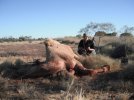 Boulia008.jpg117 KB · Views: 1,008
Boulia008.jpg117 KB · Views: 1,008 -
 Boulia020.jpg102.2 KB · Views: 707
Boulia020.jpg102.2 KB · Views: 707 -
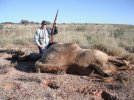 Boulia064-1.jpg149.5 KB · Views: 833
Boulia064-1.jpg149.5 KB · Views: 833 -
 Boulia054.jpg146.5 KB · Views: 772
Boulia054.jpg146.5 KB · Views: 772 -
 Boulia058.jpg110.5 KB · Views: 655
Boulia058.jpg110.5 KB · Views: 655 -
 Boulia043.jpg114.2 KB · Views: 1,011
Boulia043.jpg114.2 KB · Views: 1,011 -
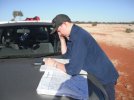 Boulia044.jpg88.2 KB · Views: 675
Boulia044.jpg88.2 KB · Views: 675 -
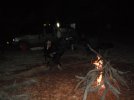 Boulia019.jpg76.6 KB · Views: 708
Boulia019.jpg76.6 KB · Views: 708 -
 Boulia025.jpg110.7 KB · Views: 703
Boulia025.jpg110.7 KB · Views: 703 -
 Boulia002.jpg94.2 KB · Views: 732
Boulia002.jpg94.2 KB · Views: 732 -
 Boulia049.jpg149.4 KB · Views: 749
Boulia049.jpg149.4 KB · Views: 749 -
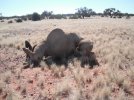 Boulia032.jpg139.1 KB · Views: 780
Boulia032.jpg139.1 KB · Views: 780
Last edited by a moderator:

